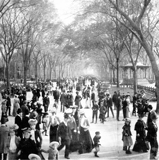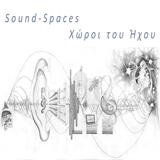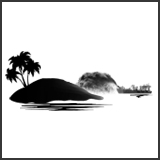

The research project "Autopia | fellow-passengers in a truck" comes through incentives and topics found in our way, without being planned or formed from the beginning of the reasearch. The sequence and connection of the concepts and readings begin and derive from a truck vehicle. Through the practical part of the project, one and a half trip (one complete and one incomplete) with a truck, we observe, analyze, collect and seek all these theoretical elements that characterize the transitional and ephemeral conditions experienced by the driver in the vehicle. The basic components of the research are the concepts of non-place, man-machine, capsule, dwelling, nomadism, voyage
As a book, as an object, the project can be considered as a collection of inserts (photos, texts, narratives) and a mix of the concepts it deals with. The chapters are independent small issues; the reader has the possibility to read them in any order he/she wants. The chapters/issues included are the following:
Introduction/Bibliography
Non-places
V for Voyage
Humachine
Freeways
Capsula
Truck
Films
Narratives
The predominance of the truck in relation to all other vehicles, and the special relationship of the driver to the space of the truck, made us choose it as our paradigm. On the road, in the transition, we change position on the map, we travel, or not travel as Deleuze says. Everything, including this project, happens without stability, in liquidity, in the intermediate.
Supervisors: Papadopoulos Lois, Tzirtzilakis Yorgos
Reference Number: 582


What is dencity? We could define it as a series of conclusions extracted from the study of contemporary urban densities, and essentially as a series of fantasies that one can develop in regard to the modern inability of metropolis to express the emerging urban densities nowadays. This research is developed in three parts: the body of analysis of urban density in various scales, the tree appendices which explore different aspects of urban density and the conclusions which are stated as fantasies about the global image of the cities and their density attributes.
The body of the research is searching the genealogy of the notion of the term ‘density’, as well as the context in which it becomes urban. In this part the methodological tools which will be developed further are defined, such as the ‘conceptual equations’ which relate the quantitative to the qualitative properties of urban densities, the spatial patterns of the urban densification and the actual measurement of urban densities based on population density, density of dwelling units per hectare and the floor area ratio (FAR) of a given part of the city.
Following is a worth mentioning part of the research, the study of spatial density trans-formations and the role of urbanization in changing the relations of density in various cityscapes. Three mayor density situations are evaluated: urban densification, urban de- densification and urban hyper- densification. Another scale, the one of metropolis, attempts to shape a broader image of the qualitative connections and interaction between various related urban densities.
Ultimately, and in consideration of the information extracted by the appendices, a statement is released which forms the conclusions. It brings urban densities of the world cities together and produces a new image of the globe, indicating the new ways of communication and connections which shape a ‘global urban village’ in densification. This is dencity.
Supervisor: Kotionis Zissis
Reference Number: 542


Starting from the field of architecture and the nowadays widespread 3D digital design, the transfer of a problem to a digital world, which is infinite on directions and independent to realtime, its conditions and limitations, a start has been made towards a new era. From the moment, though, that the models are not in the physical world in which they are depended, it is difficult to understand completely the massive amount of information that are transferred and how would the corresponding images of the models be in the real world.This particular problem does not only show on the field of architecture, but also in other fields, like internal decoration, advertising, clothing industry, even in fields irrelevant to design like modern medicine.
Mapping Projection offers a solution to this problem, evolving even more in the abilities of digital media by transferring this private universe back to reality, thus offering the user a sense of interaction and experience during the course of the presentation. The name betrays the process of this technique, which is divided into the stages of Mapping, i.e. the analytical mapping of surfaces and the Projection, i.e. the projection of the desired image onto the previously mapped area. The user can operate the two stages, either in the manner described, or by any other technological or not media that he wants. There is thus created a new 4TH dimension in our reality where the visual map of the three dimensions, which consists of the views of the buildings and the surrounding environment, to the work and the details of the smallest object, giving its position to this parallel layer of optical reality.
Supervisor: Floros Aggelos
Reference Number: 549


This research paper studies the beginning and the evolution of park’s model in America as occurred during the period 1850-1930 through the movement of public parks or park movement. It investigates the park concept’s origins which are found in Europe and ancient history, the urban and social factors that apply in each study period and the the movement’s ideology and individuals who supported it, Frederick Law Olmsted being the main representativ.
Reference is made tothe playground movement, the child saving movementandthe movement of maintenance as key factors in the beginning of the movement.
Then data on the physical form of the parks are presented. Firstly it discusses the relationship of parks and recreation and presents the major classifications of park types and the central categorization of Cranz, which defines the pleasure ground and reform park -2 types / periods studied -and in coming decades the recreation facility and open-space system. Then details are given for the siting of the pleasure ground, and the activities that take place in it. The transition from the first period of the pleasure ground 1850-1900 in the second period of reform park 1900-1930 is noted.
The design andarchitecture of the two periods constitutes a separate chapter which is completed within the example of Central Park.
Finally the developmentof the park in the coming decades the periods 1930-1965 and 1965 is being reported and then there are summary conclusions
Supervisor: Trova Vasso
Reference Number: 538


The research topic is developed in six chapters:
Having always in mind the concerns of the association and the interaction of the sound with the architectural space, in other words how necessary is the existence of the obstructions for the sound in order to create space, is the base to start writing this research. In the beginning, some basic definitions are outnumbered and written, such as the real concept of the architectural space, but mainly many technical definitions of the sound and how is developed, are mentioned in this part. Afterwards, some known definitions of the acoustic are written and how they affect within each architectural space, in order to think what sound-space really means.
In the second chapter of this research, relevant bibliography is selected in order to find out whether we can create space by the means of the sounds or not. Having read the books, we put ourselves in the position to analyze separately the way that each author arrives to indicate the definition and the conclusions of the specific topic of sound space.
The third chapter presents extensively the findings of our research while reading the already mentioned literature as well as with our personal views about the meaning of space sound. In the fourth chapter, we have the analysis of the methodology which followed on finding and classifying audio applications and installations presented in the next chapter.
In the fifth chapter of the research, practical examples of the implementation of the conclusions of the above passages are presented, making it more understandable to create spaces with the help of sound with or without the presence of visual obstacles, while in the sixth and final chapter, we present the general findings of the above research.
Supervisor: Remy Nicolas
Reference Number: 556


